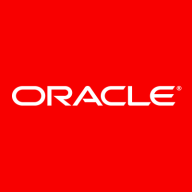


Find out what your peers are saying about Snowflake Computing, Oracle, Teradata and others in Data Warehouse.
The investment is good, which is why people choose this hardware.
Exadata comes with a platinum gateway and comprehensive support, which often gets immediate attention with severity one cases.
I received great support in migrating data to Snowflake, with quick responses and innovative solutions.
The technical support from Snowflake is very good, nice, and efficient.
The technical support from Teradata is quite advanced.
Customer support is very good, rated eight out of ten under our essential agreement.
Within a site, scalability is excellent.
Snowflake is very scalable and has a dedicated team constantly improving the product.
The billing doubles with size increase, but processing does not necessarily speed up accordingly.
This expansion can occur without incurring downtime or taking systems offline.
Scalability is complex as you need to purchase a license and coordinate with Teradata for additional disk space and CPU.
Once installed, Exadata is very stable.
Snowflake is very stable, especially when used with AWS.
Snowflake as a SaaS offering means that maintenance isn't an issue for me.
I find the stability to be almost a ten out of ten.
The workload management and software maturity provide a reliable system.
I cannot create an extended rack cluster with one node on one site and another node on a different site.
There are minor areas where improvement is needed, such as making the user interface more user-friendly and enhancing configuration and customization options.
Enhancements in user experience for data observability and quality checks would be beneficial, as these tasks currently require SQL coding, which might be challenging for some users.
Cost reduction is one area I would like Snowflake to improve.
Unlike SQL and Oracle, which have in-built replication capabilities, we don't have similar functionality with Teradata.
I would rate the price an eight on a scale from one to ten, indicating it is fairly expensive.
Snowflake's pricing is on the higher side.
Snowflake lacks transparency in estimating resource usage.
Initially, it may seem expensive compared to similar cloud databases, however, it offers significant value in performance, stability, and overall output once in use.
Teradata is much more expensive than SQL, which is well-performed and cheaper.
It also offers high backend speed between self-storage units and servers, which is beneficial for processing.
The most valuable features of Oracle Exadata are its high availability and cluster environment.
Snowflake is a data lake on the cloud where all processing happens in memory, resulting in very fast query responses.
Being able to perform AI and Machine Learning in the same location as the data is quite advantageous.
The data mover is valuable over the last two years as it allows us to achieve data replication to our disaster recovery systems.



Oracle Exadata allows enterprises to run any Oracle Database workload with the highest performance, scale, availability, and security on fully compatible cloud and on-premises infrastructure. Exadata uses a scale-out design with unique optimizations that include persistent memory, SQL query offload, and built-in resource management to optimize performance for OLTP, analytics, machine learning, and mixed workloads running in consolidated environments. By running hundreds or thousands of optimized Autonomous Database and Exadata Database instances on Exadata Cloud or Cloud@Customer infrastructure, customers are able to minimize their infrastructure, reduce management, improve developer productivity, and lower total costs by up to 40%, as described in Wikibon’s analysis (PDF).
The main benefit of Exadata is its speed. It hosts operating systems, CPU memory, and hard drives. It runs all types of databases, including online transaction systems, processors, and data warehouses, while remedying the poor performances of older databases.
Oracle Exadata features a simple and fast database storage system that protects and backs up your critical data. It accelerates data warehouse performance for faster access to business information and data. It is the ideal database solution for companies looking to build up their infrastructure from scratch.
Oracle Exadata Database Machine Key Benefits
Accelerate database processing: Exadata Storage Server implements a unique, highly efficient database-optimized storage infrastructure that enables Exadata’s unparalleled performance without any of the bottlenecks that traditional storage experiences. Each storage server contains CPU processors that are used to offload database processing. The CPUs in the storage servers do not replace database CPUs, but work alongside them to accelerate database workloads.
Reviews from Real Users
Oracle Exadata stands out among its competitors for a number of reasons. Two major ones are its robust performance and its wide variety of database features that make it a comprehensive database solution.
Adriano S., an IT system integrator at a financial services firm, writes, "Oracle Exadata's performance is one of its best features. We are very satisfied with it. The previous equipment used to make a payment for all the government employees used to take at least two days for some of the transactions. Now, it will take hours to make the same amount of payments. Another thing is the flexibility to organize all our databases. We can use it with new features that come with this version of Oracle 19c, which is the container database. With container databases, we can work with many databases, organized, and segregated, and still access the functions and management, the things that most of the technical people like to have in place."
Paulo X., a sales manager at LTA-RH Informatica, notes, "Regarding features, there are so many that we can offer to customers. When we sell Exadata Cloud, there are many options to choose from, especially when it comes to enterprise database options. In my experience, the main features that are appreciated are various ones like GPS and the assortment of security options."
Snowflake is a cloud-based data warehousing solution for storing and processing data, generating reports and dashboards, and as a BI reporting source. It is used for optimizing costs and using financial data, as well as for migrating data from on-premises to the cloud. The solution is often used as a centralized data warehouse, combining data from multiple sources.
Snowflake has helped organizations improve query performance, store and process JSON and XML, consolidate multiple databases into one unified table, power company-wide dashboards, increase productivity, reduce processing time, and have easy maintenance with good technical support.
Its platform is made up of three components:
Snowflake has many valuable vital features. Some of the most useful ones include:
There are many benefits to implementing Snowflake. It helps optimize costs, reduce downtime, improve operational efficiency, and automate data replication for fast recovery, and it is built for high reliability and availability.
Below are quotes from interviews we conducted with users currently using the Snowflake solution:
Sreenivasan R., Director of Data Architecture and Engineering at Decision Minds, says, "Data sharing is a good feature. It is a majorly used feature. The elastic computing is another big feature. Separating computing and storage gives you flexibility. It doesn't require much DBA involvement because it doesn't need any performance tuning. We are not doing any performance tuning, and the entire burden of performance and SQL tuning is on Snowflake. Its usability is very good. I don't need to ramp up any user, and its onboarding is easier. You just onboard the user, and you are done with it. There are simple SQL and UI, and people are able to use this solution easily. Ease of use is a big thing in Snowflake."
A director of business operations at a logistics company mentions, "It requires no maintenance on our part. They handle all that. The speed is phenomenal. The pricing isn't really anything more than what you would be paying for a SQL server license or another tool to execute the same thing. We have zero maintenance on our side to do anything and the speed at which it performs queries and loads the data is amazing. It handles unstructured data extremely well, too. So, if the data is in a JSON array or an XML, it handles that super well."
A Solution Architect at a wholesaler/distributor comments, "The ability to share the data and the ability to scale up and down easily are the most valuable features. The concept of data sharing and data plumbing made it very easy to provide and share data. The ability to refresh your Dev or QA just by doing a clone is also valuable. It has the dynamic scale up and scale down feature. Development and deployment are much easier as compared to other platforms where you have to go through a lot of stuff. With a tool like DBT, you can do modeling and transformation within a single tool and deploy to Snowflake. It provides continuous deployment and continuous integration abilities. There is a separation of storage and compute, so you only get charged for your usage. You only pay for what you use. When we share the data downstream with business partners, we can specifically create compute for them, and we can charge back the business."
Teradata is a scalable data analytics platform designed to meet enterprise demands for large-scale data management and processing, focusing on performance, scalability, and security for complex query executions.
As a leading data warehousing solution, Teradata integrates advanced analytics enabling organizations to derive insights from massive datasets. It supports high-volume data workloads with its architecture optimized for analytical queries. Users benefit from its robust scalability, allowing seamless expansion as data grows. Teradata's SQL engine is compatible with a wide range of data types, ensuring flexibility in data analysis. With advanced security measures, it protects sensitive data across various environments, providing peace of mind to users handling critical information.
What are the most important features of Teradata?Teradata is widely used in industries like finance, telecommunications, and healthcare, where data-driven decisions are critical. Companies leverage its robust analytics capabilities to enhance customer experiences, streamline operations, and ensure compliance with regulatory requirements. In these sectors, quick access to data insights can significantly impact competitive advantage.